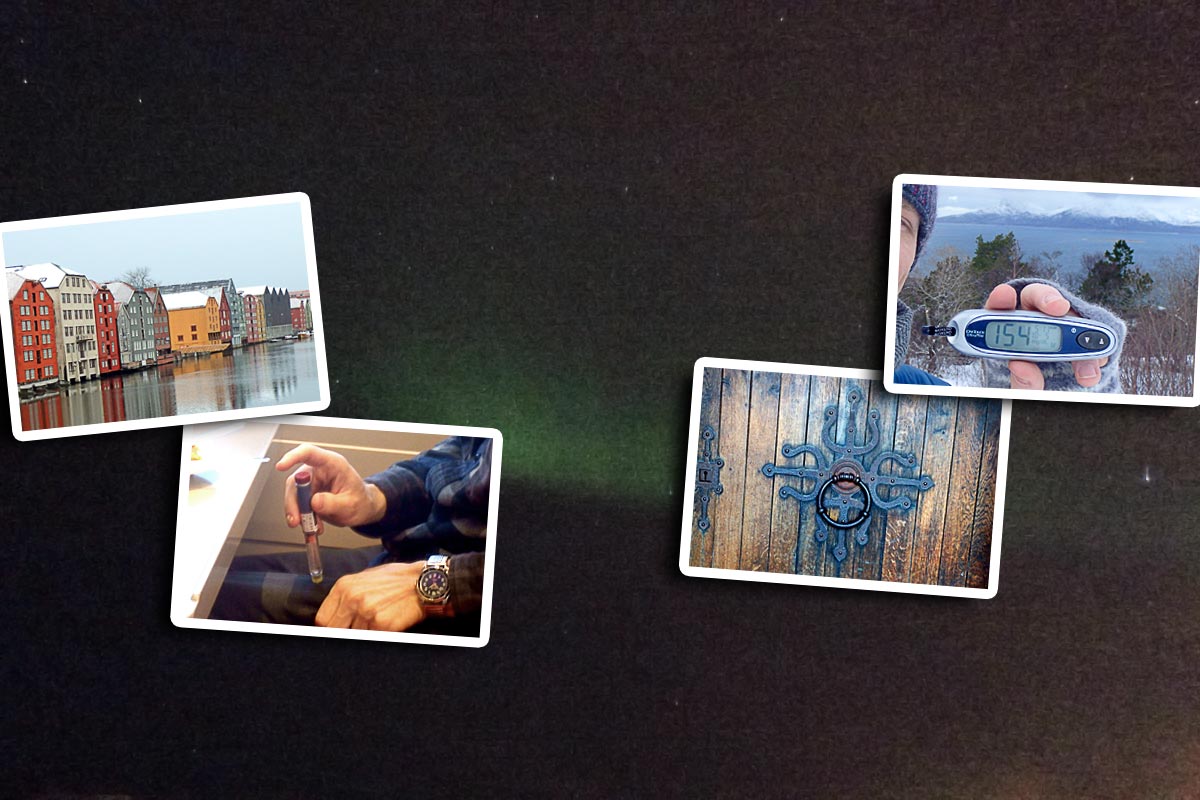
Traveling to Norway with diabetes is very easy: medical training and technology is world-class in Norway, and Norwegians are not only generally familiar with diabetes but usually speak excellent English as well.
The only real problem you’re likely to have traveling in Norway with diabetes is your own tentativeness and fear. There are some things you should do to prepare for spending time in Norway as a diabetic, but luckily these are simple things to take care of.

Two vital things to do
To ensure your trip to Norway is fun, exciting, smooth, and problem-free when it comes to diabetes there are two things you need to do.
- Prepare your supplies. Pack more than you need and make sure you can find anything you run out of on the way.
- Get the right attitude. Understand that travel to Norway with diabetes is not dangerous.
Keep reading this guide for information on these issues and for tips on what you can expect from Norway and what really happens when you go there.

Bodø’s Northern Lights.
How to speak Norwegian – for T1Ds
Anyone you speak with in Norway will probably know English as well as, or nearly as much, as you. It really isn’t necessary to learn any diabetes-related Norwegian, but if for some reason you do need it, try these phrases.
(Note there are two versions of Norwegian – Nynorsk ([N] below) in the populous southwest of the “bulge” that includes Bergen and Oslo, and Bokmål ([B] below) further inland and in the north. They’re similar and both should be understood by anyone.
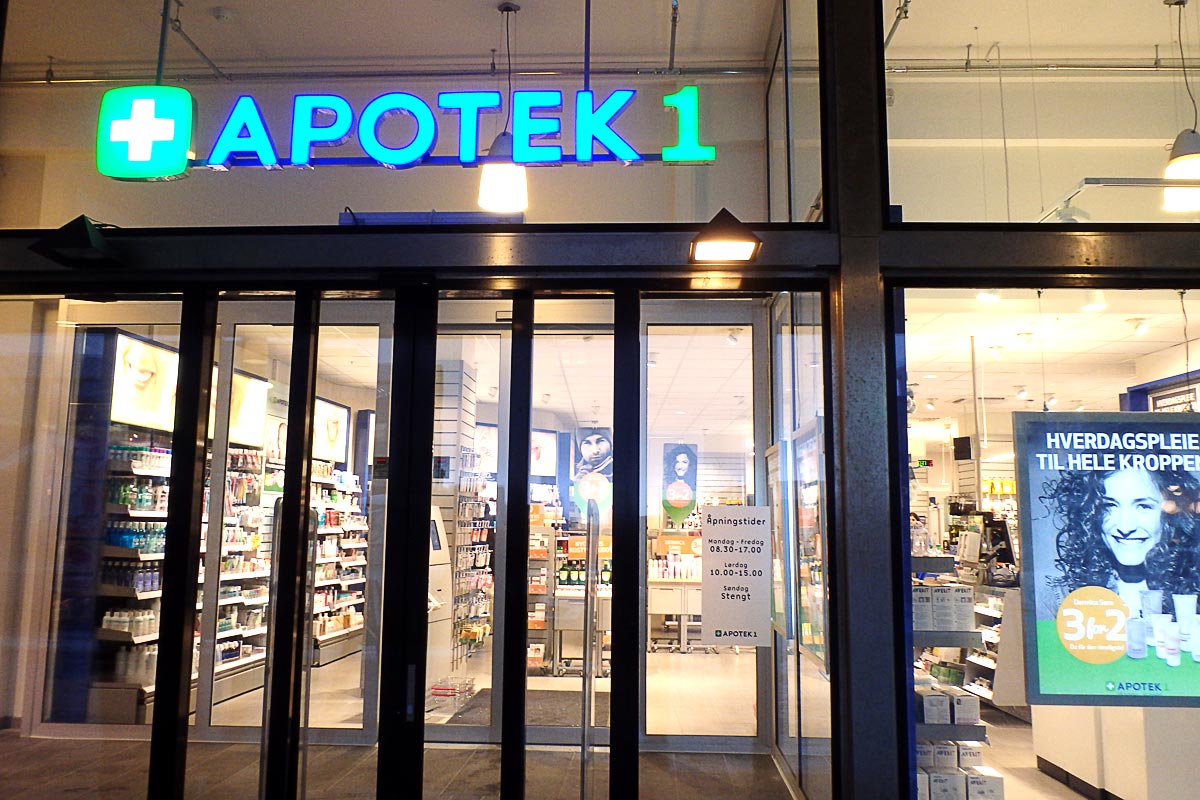
Norwegian pharmacy.
- “diabetes” – [N] sukkersjuke (“soo care shoe keh”) or [B] sukkersyke (“soo cares you keh”)
Note: translates as “sugar illness”, but “diabetes” is preferred - “carbohydrate” – [N/B] karbohydrat (“car bo hew drot”)
- “insulin” – same as English
- “blood sugar” – [N/B] blodsukker (“bload soo care”)
Easy huh? It’s actually even easier since the English word “diabetes” is often used even in Norwegian; its pronunciation is “dee a beh tess”.
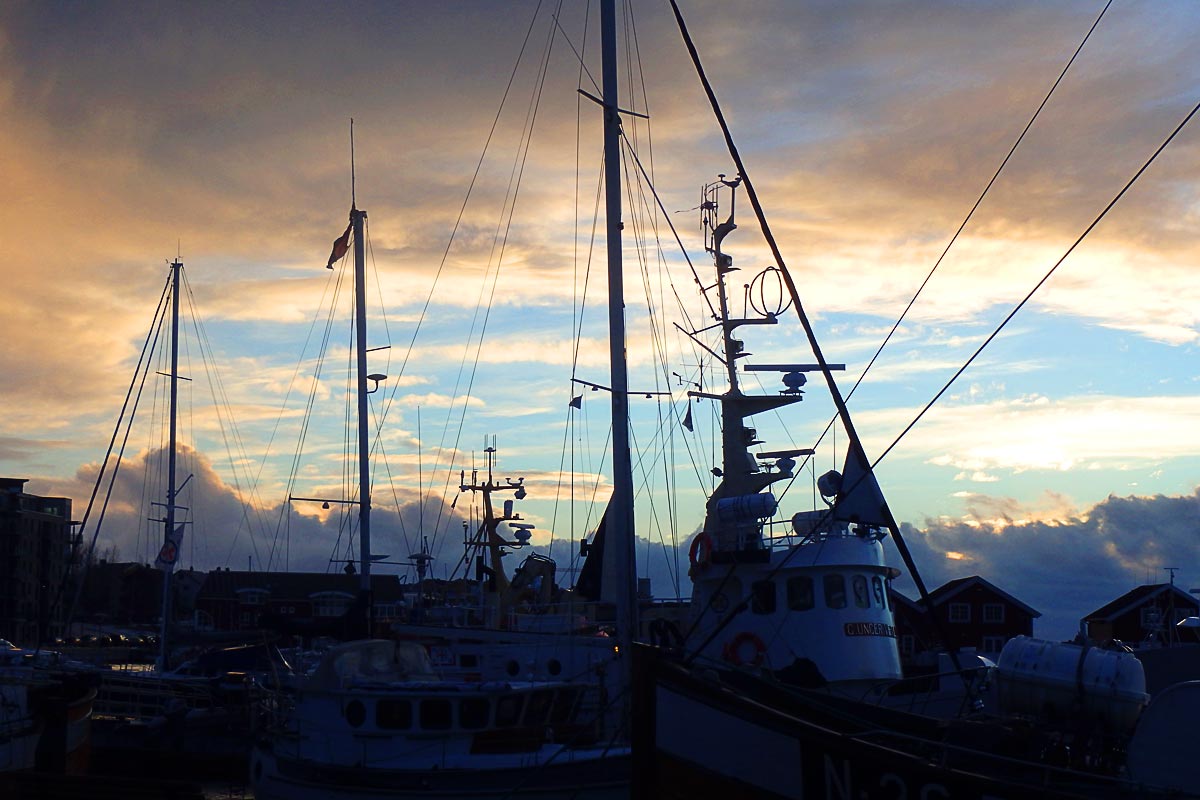
If you, for some reason, have to speak to a medical professional (doctor, nurse, or pharmacist) about being diabetic, your English will be fine. Just be patient and speak clearly. If necessary, show your insulin or test strips or something like that to get the message across.
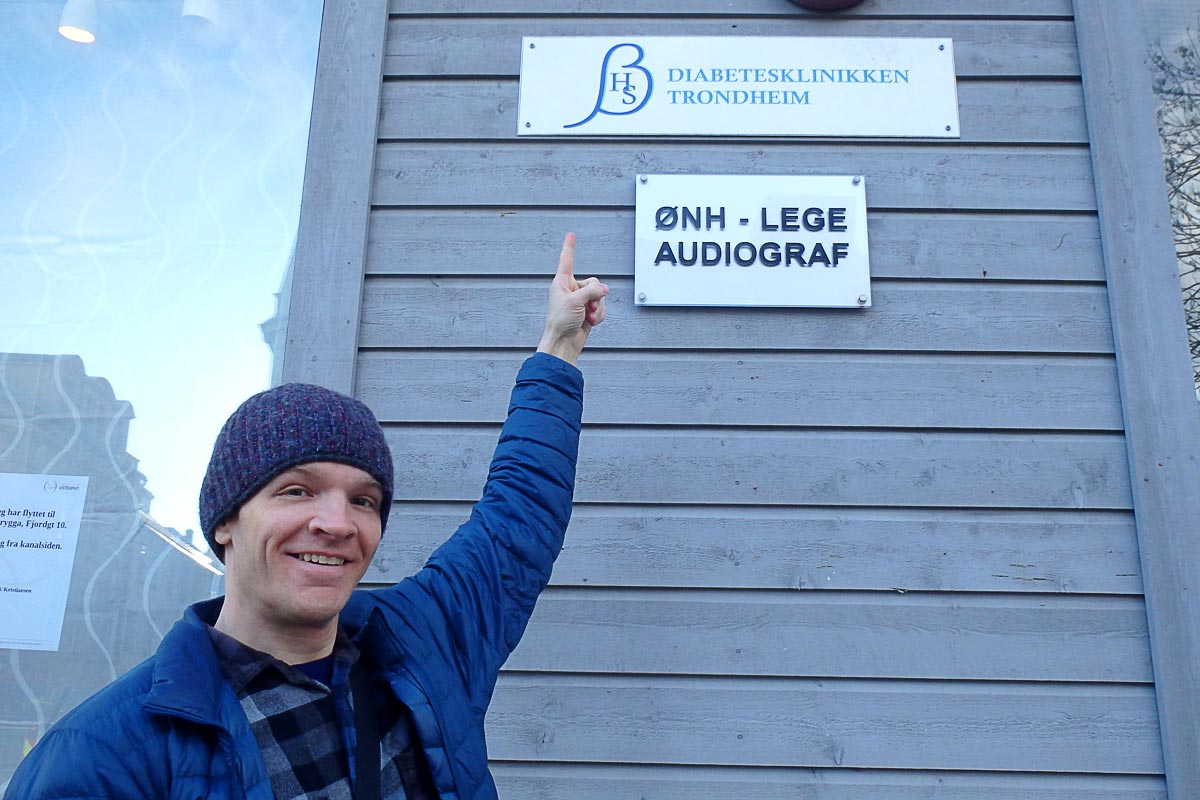
Communicating “diabetes” non-verbally
Although there is almost no chance it will be necessary, I recommend you wear a necklace, bracelet, or something that says “DIABETES” and/or “TYPE 1 DM” or something similar on it. If you don’t want to do that, at least carry an easy-to-find card in your pocket that says it. If there is some situation where you can’t talk or make yourself understood, people can check for that and understand what you need.
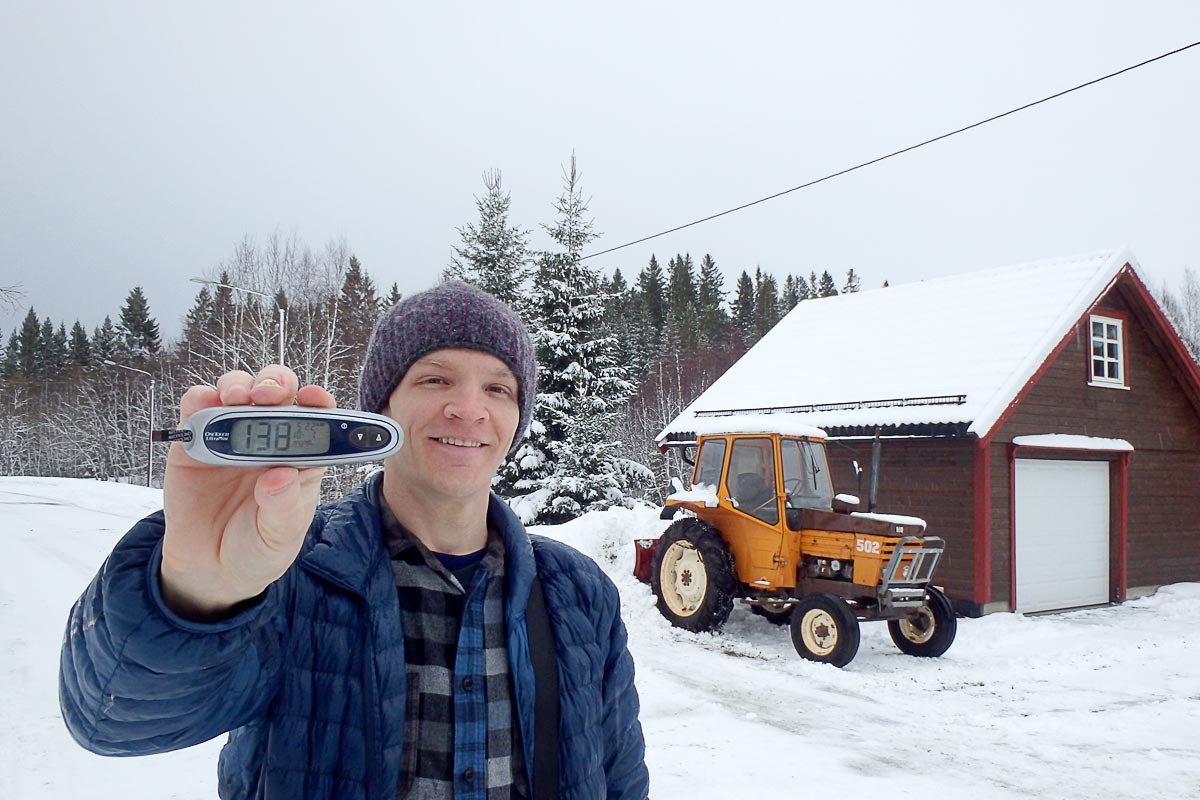
How to prepare for Norway with diabetes
Preparing for travel around Norway with diabetes means, basically, keeping your diabetes supplies safe and plentiful enough.
The easiest way is to figure out how much of everything you’ll need during your time there, and double it. Bolus and basal insulin, test strips, needles, and whatever else you use. Stock up on twice as much as you need before you leave home and take that.
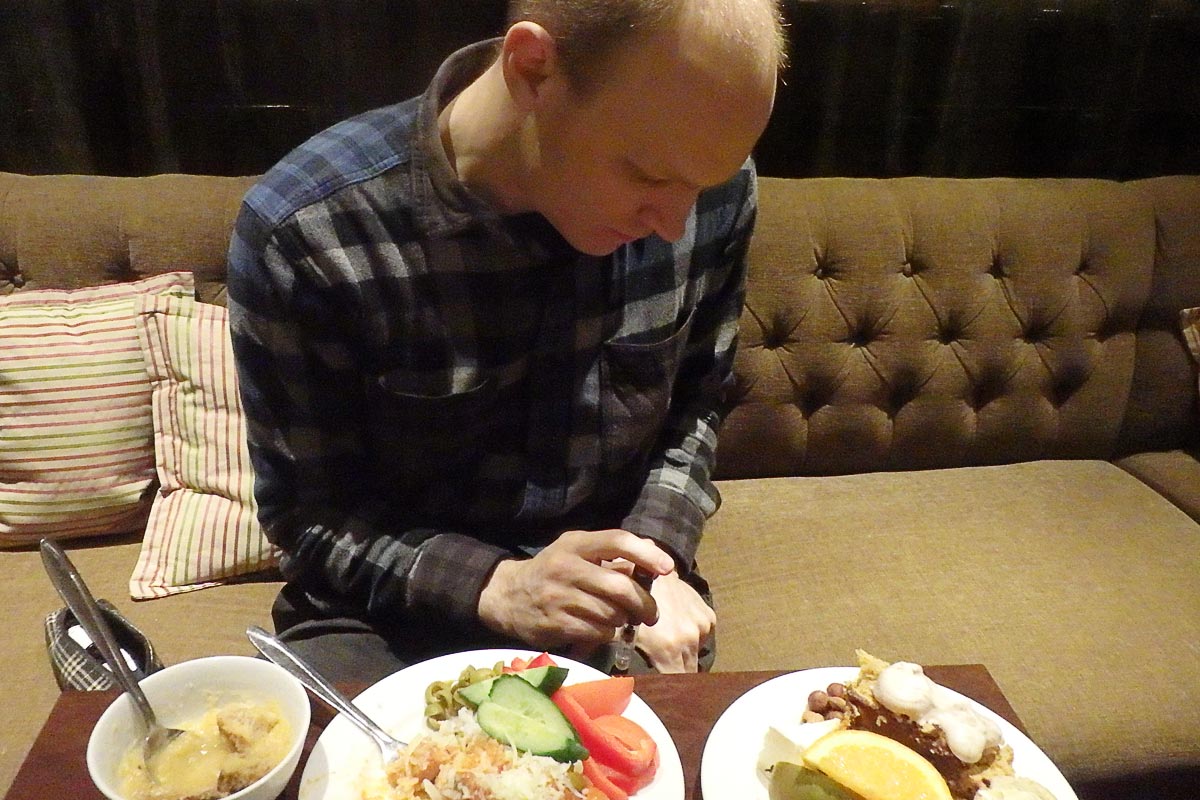
Split everything up into at least two parts and put them in different bags. When I visited Norway I put a little over half my supply in my big backpack, which usually sat in my hotel rooms, and the rest in my day pack which I had with me at all times.
The other aspect of being prepared in Norway is food: meals and low blood sugar snacks. See below for more on this.
Keeping insulin cool in Norway
Norway isn’t all snow and frozen rivers – it gets hot in summer and even winters can be mild, especially on the coast. Any hotel, hostel, or guesthouse you stay in will have either a refrigerator in the room or one on the premises they’ll let you use.
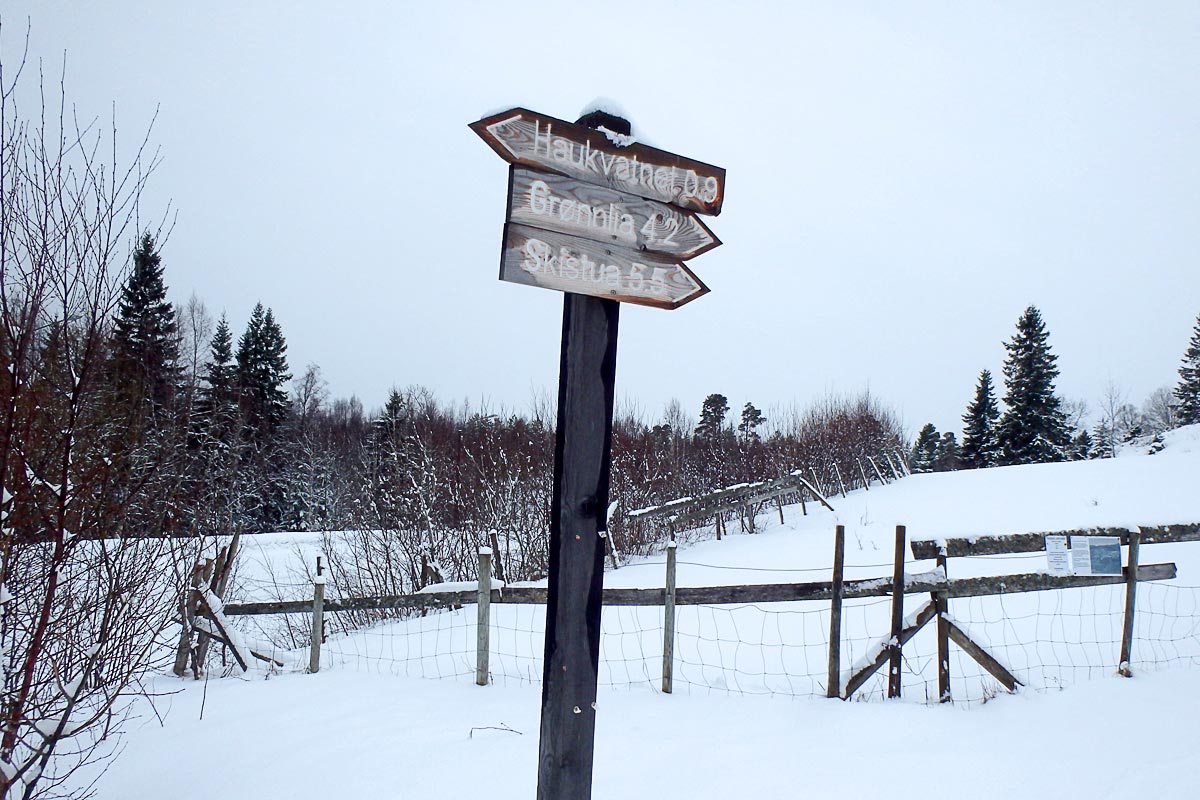
But this is likely to be unnecessary – as long as it’s kept out of direct sunlight, insulin should be cool enough stuffed down in your bag in any Norwegian season. Even the supply you take in your day pack should be ok. Just keep it out of the sun, and if it’s really hot you can use an icepack, perhaps wrapped up in a shirt, down in your bag.
Keeping insulin cool is like most aspects of diabetes travel – people fear it far more than they should (see the next section!).
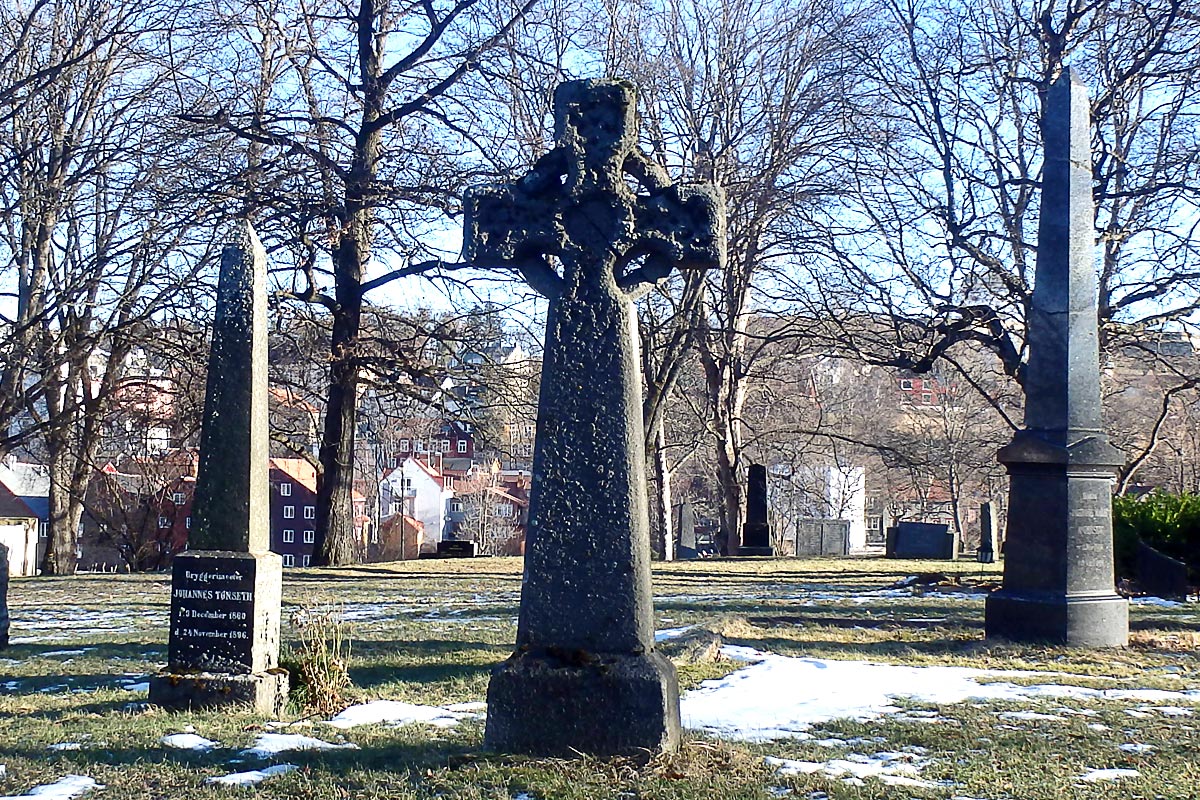
Having the right attitude about Norway with diabetes
This is the most important section on this page. Fear of the unknown and worrying about all the things that can go wrong is the number one thing keeping people with diabetes from traveling.
Nothing bad will happen to you in Norway.
Everything you need is easy to find, and infrastructure in Norway is excellent. If you are nervous or scared of what could happen to you, stop it! No need to talk yourself out of a great adventure for no reason. Of course something bad could happen; that’s always the case anywhere. But you live your live anyway. And in Norway you will have nothing to worry about.
Nothing bad will happen to you in Norway.
Believe it. Internalize it. Accept it. It’s true.
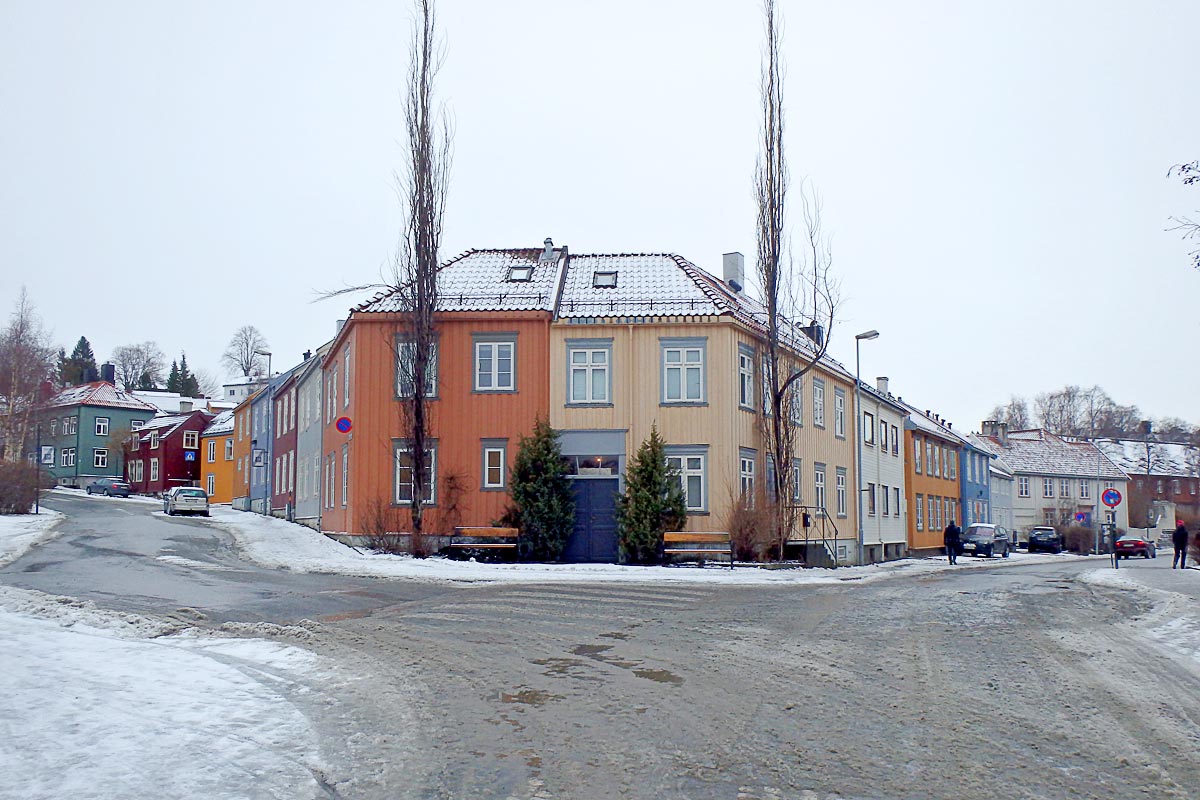
Food in Norway
Food in Norway for diabetics isn’t too hard to figure out. Seafood, obviously, is very popular, and often comes with potatoes. Rice isn’t as common as bread, and breakfasts, lunches, and dinners shouldn’t be too hard to figure out carb-wise.
Here is some of the food I experienced on my own trip to Norway – a real report that should reflect what you’ll find to a degree. How would you handle these foods?
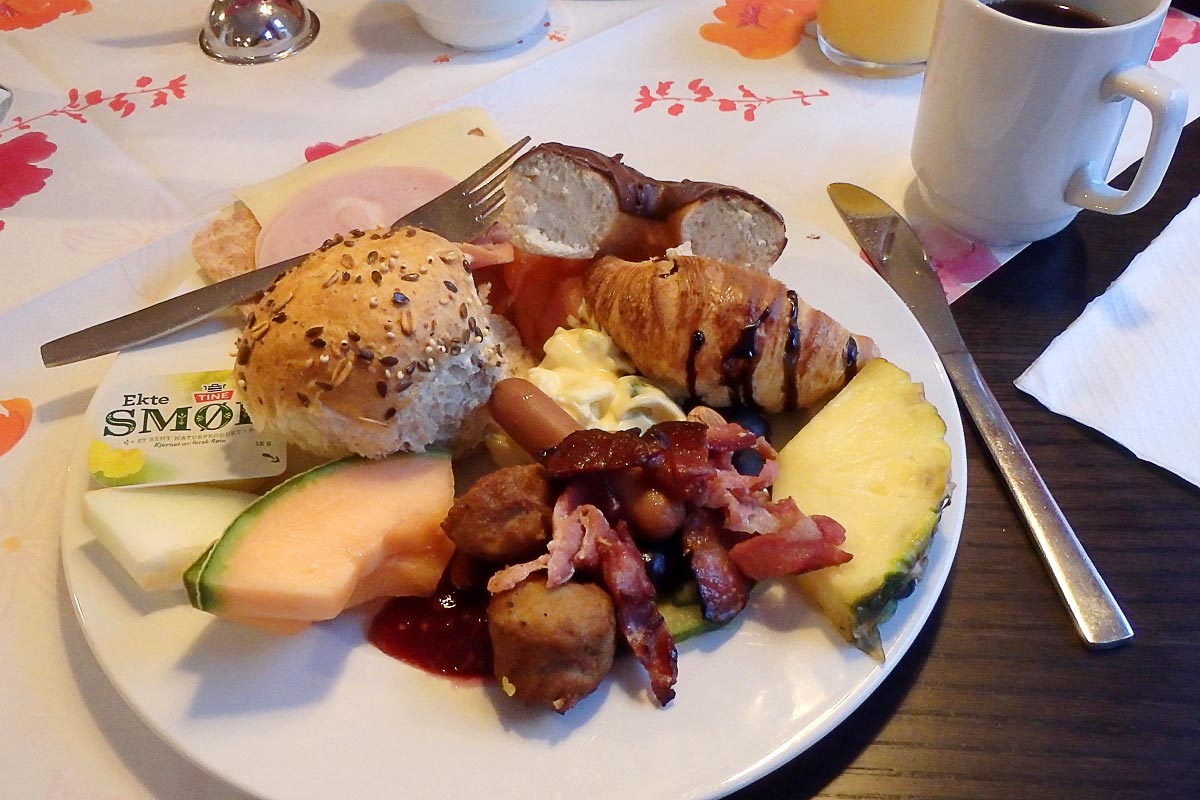
- Breakfast buffets – If your accommodation offers a breakfast buffet, this can be a huge and varied affair in Norway. You can gorge on cereals, breads, meats, fish, fruits, nuts, and many other things. Morning insulin doses are tricky for a lot of diabetics, so take what you think you can handle and dose generously. Check your blood sugar afterwards and adjust accordingly.
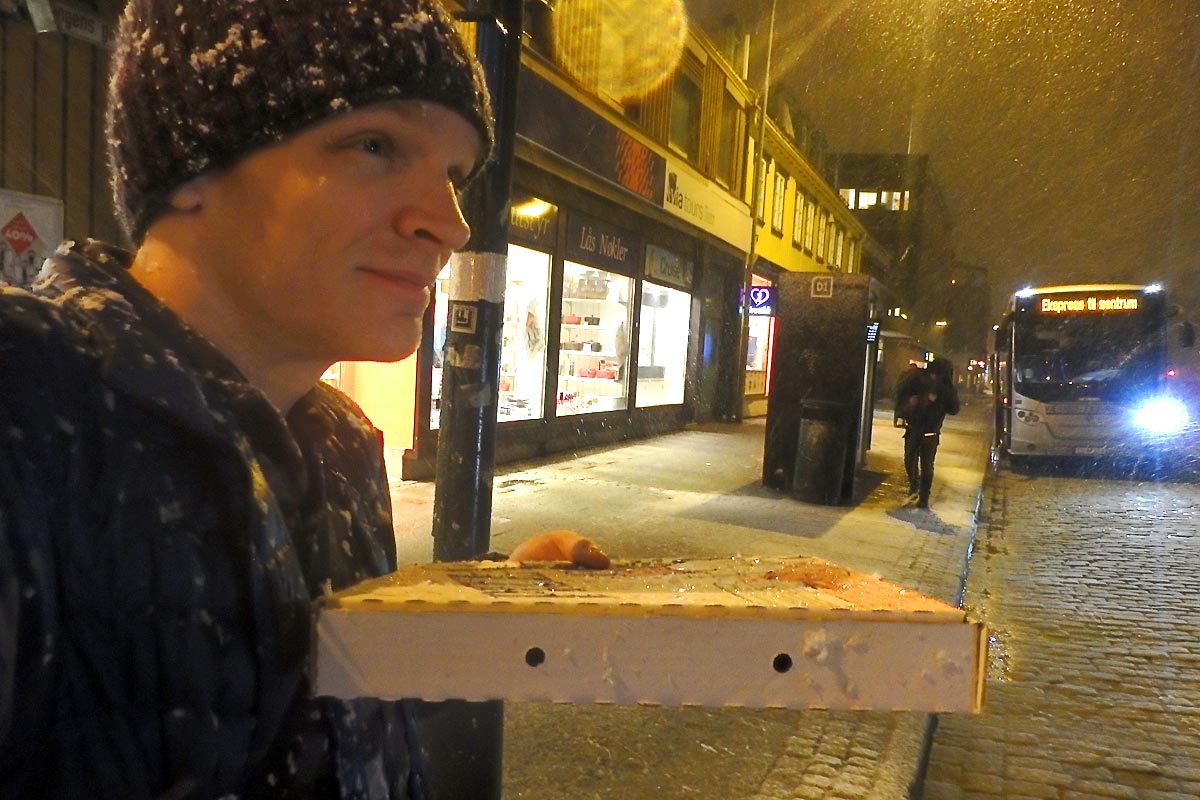
Carrying pizza through a Norwegian snowstorm.
- Pizza and burgers – If you want a quick (and likely expensive) meal, you can find simple pizza places and hamburger/fast food shops all across Norway. There is no surprise in these foods specific to Norway; pizza crust is just as hard to handle here as anywhere. Round up your insulin dose, and even consider splitting it up into two injections. Check before, during, and afterwards just to be sure you’re doing all right.
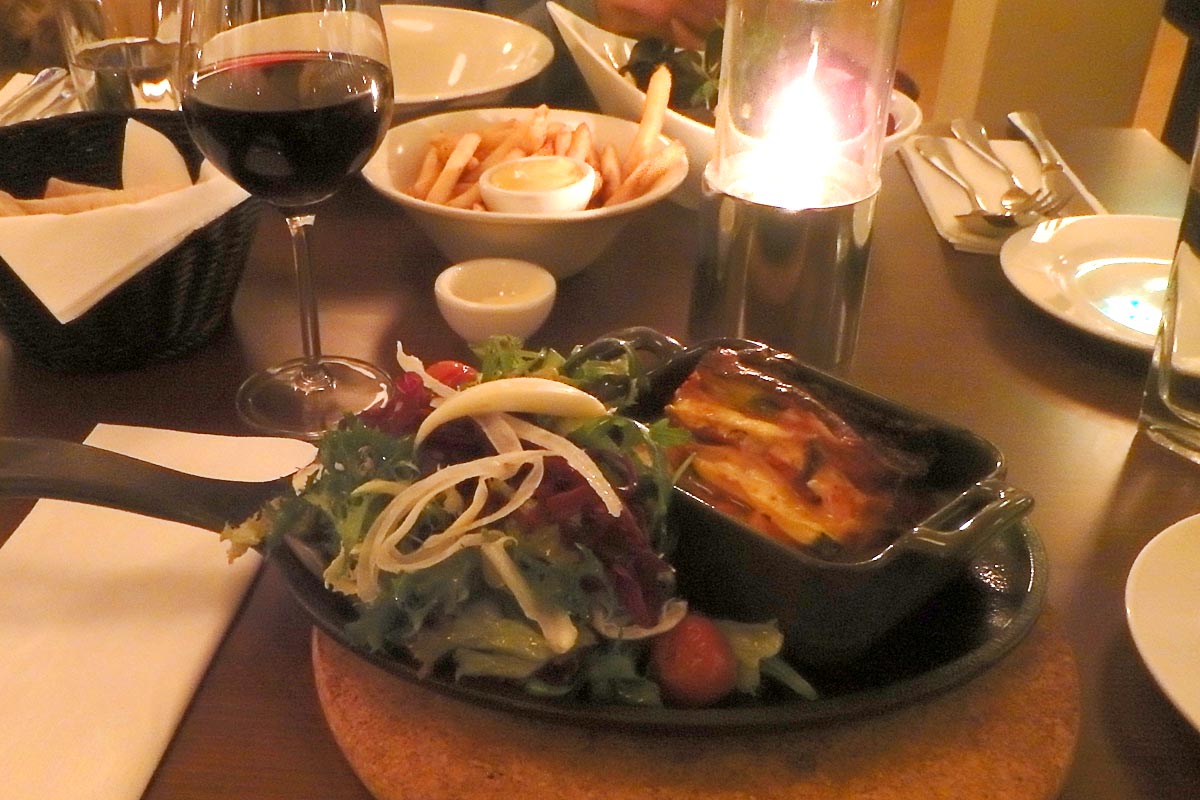
Lasagna, wine and bread. And fries.
- International foods – Bacalhau from Portugal, lasagna from Italy, sushi from Japan. All these and more are common in Norway. If you want a break from Norwegian food feel free to break out and try the local version of international foods.
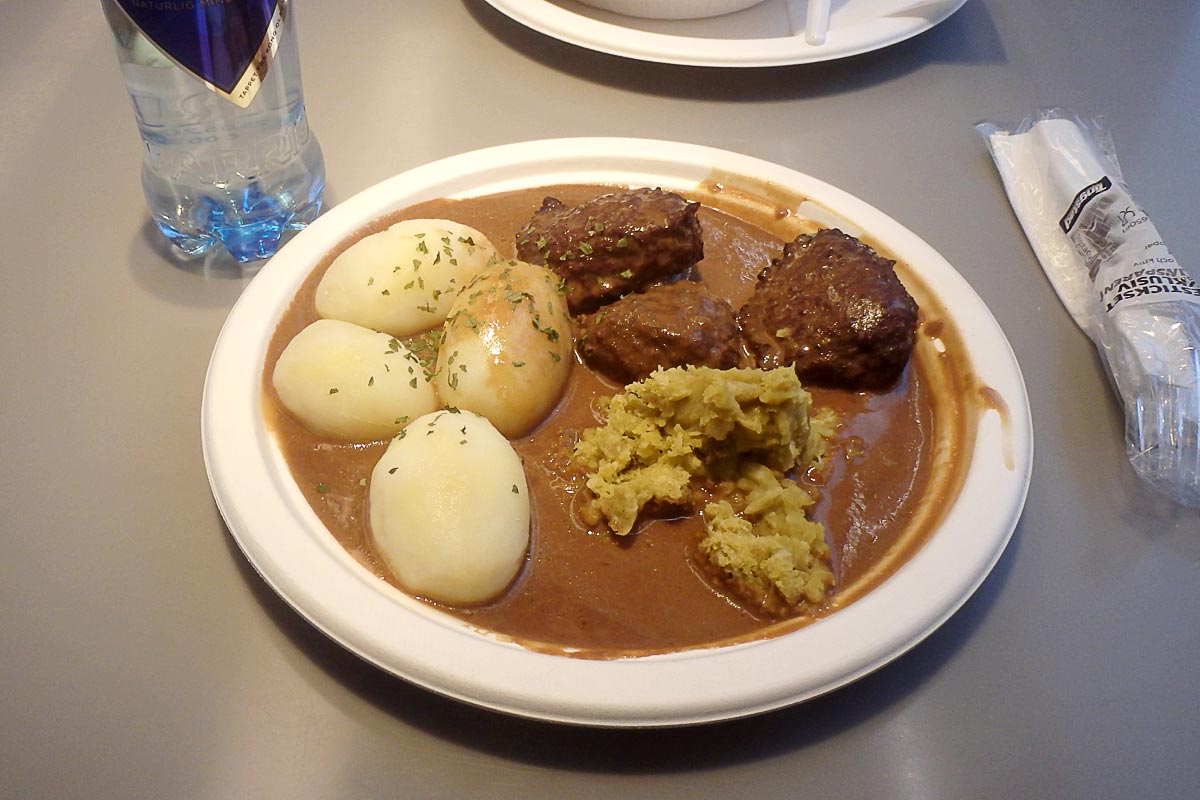
Meatballs and potatoes on a Norwegian train.
- Train food – Long-distance trains in Norway have their own restaurant cars. Pricey, like everything in Norway, the meals on these can be surprisingly good. Note that sauces for simple things like meatballs can be thicker in carbs than it seems, and beers might be sweeter than you think. But don’t let diabetes or blood sugar worries keep you from chowing down on some tasty Norwegian train food while flying through some of the most beautiful countryside on Earth!
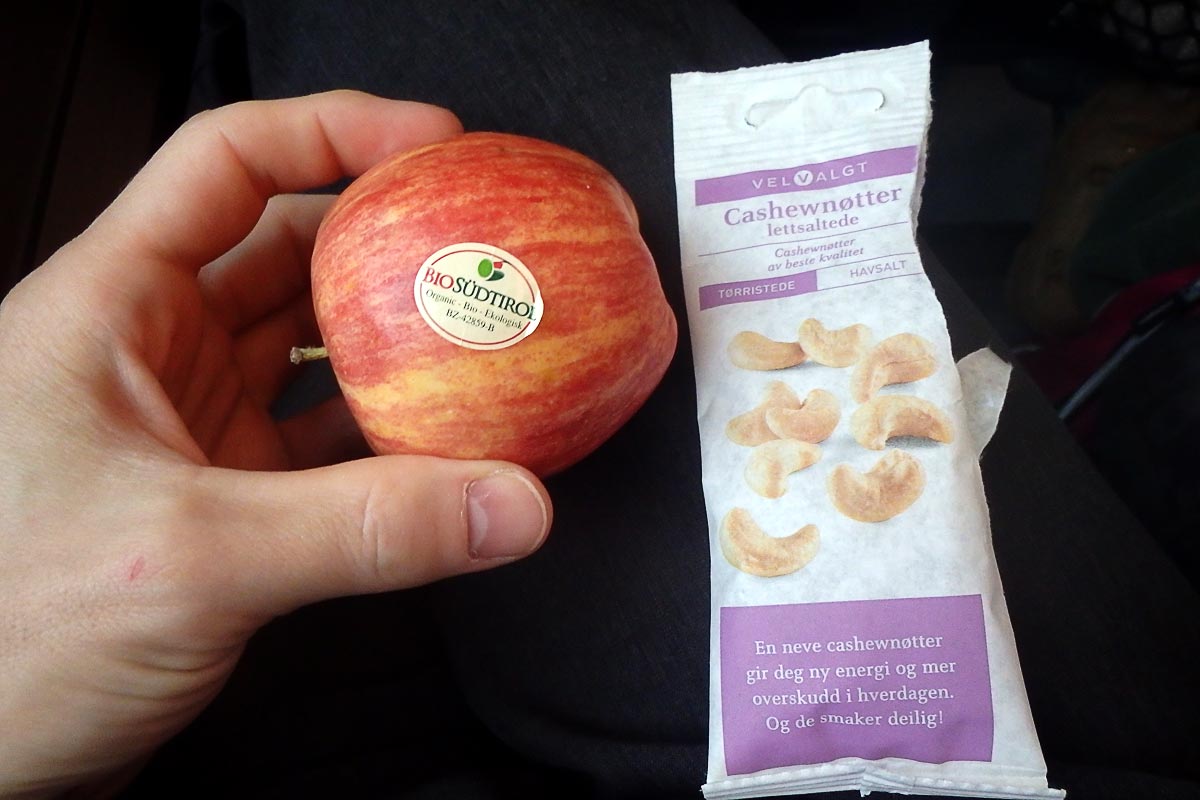
- Snack foods – Little shops and kiosks are everywhere and are good places to find simple snacks for a train ride, a bus trip, or just a picnic. Sandwiches, fruits, nuts, chips, and whatever else you like is easy to find.
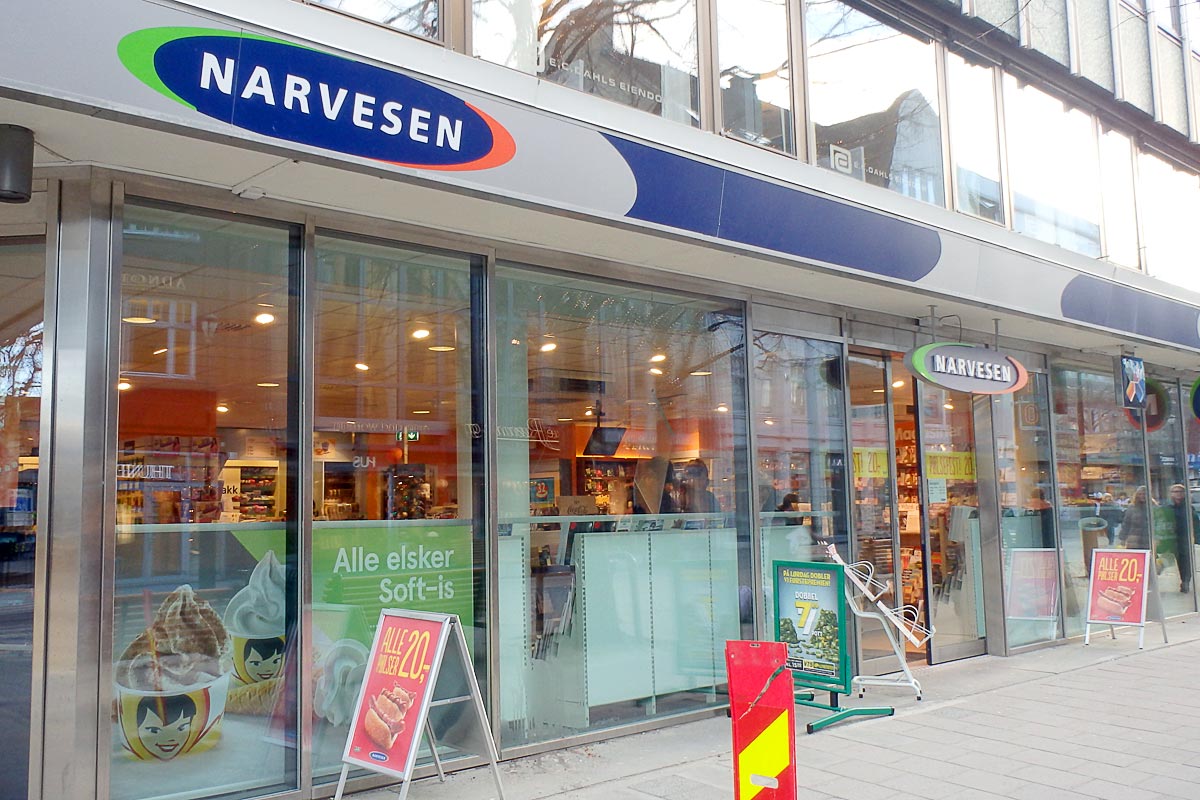
- Supermarket food – I once saved money in Norway by buying a large round loaf of bread and meat spread called leverpostei. It was my lunch for a few days in a row, filled me up enough, and cost little compared with Norwegian restaurants. Fresh smoked fish can be found in local markets as well.
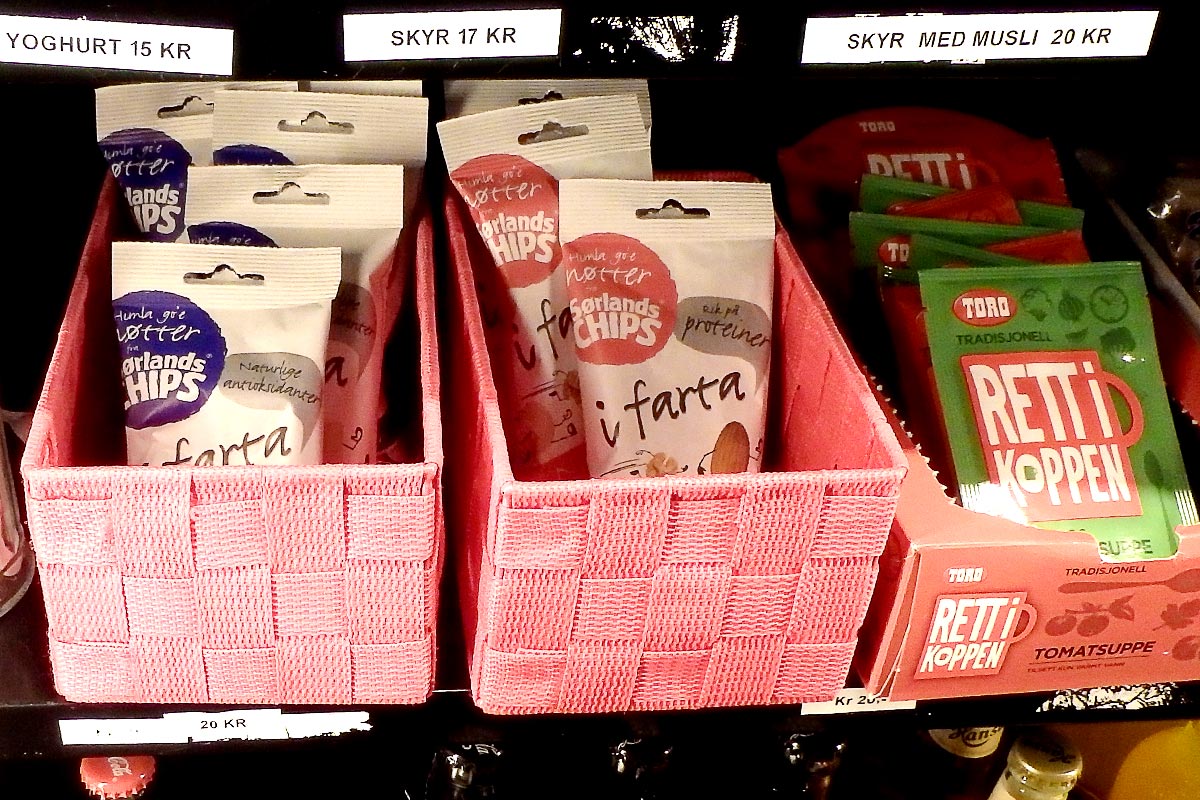
i-farta snacks. Tee-hee!
- Shaky snack – Low blood sugar snacks are important: you should always have some on you. Never leave the hotel even for a minute without them. The usual candy bars and juices are very easy to find in convenience stores like Narvesen, but stock up any time you get the chance: it is possible to be on some tour or long bus ride with no services. Keep some with you and an extra supply in a larger bag.
Taking insulin in public in Norway
You can go to the bathroom to shoot up or check your blood sugar any time in Norway. Or, if possible, you can do it at your table or in the park or right there on the train, bus, or ferry. Try to be discreet about it, but even if you have to do it through your clothes it can be easier. I always took my shots through my travel pants into my legs without any problem.
(See my Full review of Bluff Works travel pants.)
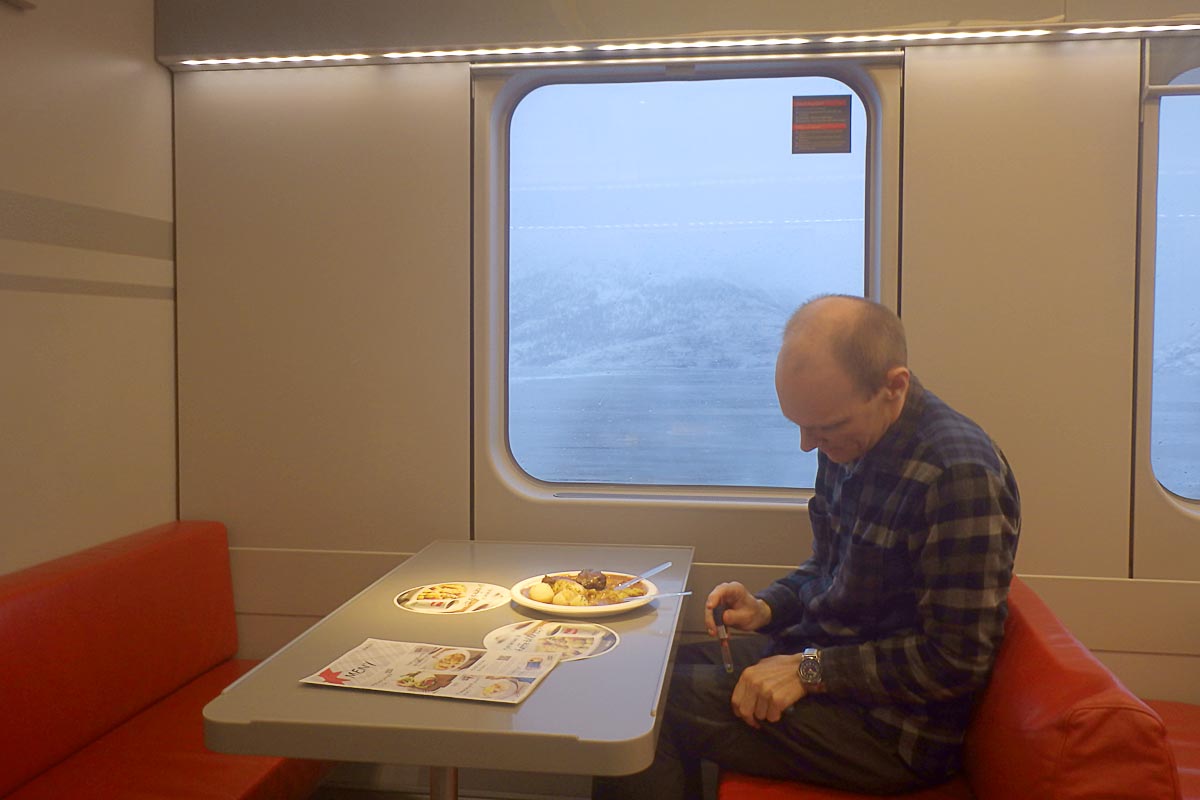
My diabetes experiences in Norway
I spent several days in Norway to finish up a 4+ month trip across Europe; it was expensive and became a final blowout celebration to end the trip with.
My partner Masayo was with me (non-diabetic). I kept track of all my blood sugars and what I ate, which was usually food included in our hotel rooms. My averages were not great but there were some good signs. Funny sleep schedules (naps in the afternoon) sometimes wrecked my BG more than the food I was eating.
My route in Norway
On a trip to Norway in 1998 I visited Oslo and Bergen, but during my more recent trip we flew from Croatia, through the Oslo airport, to Trondheim halfway up the coast. It was February, and Trondheim was cold, but absorbingly Scandinavian with its imposing cathedral and the northernmost tram line on Earth. We took a day-long train journey from Trondheim to the small town of Bodø, north of the Arctic Circle. There we got to gaze at the amazing, icy fjords and finally saw the mystical Northern Lights on our final night.
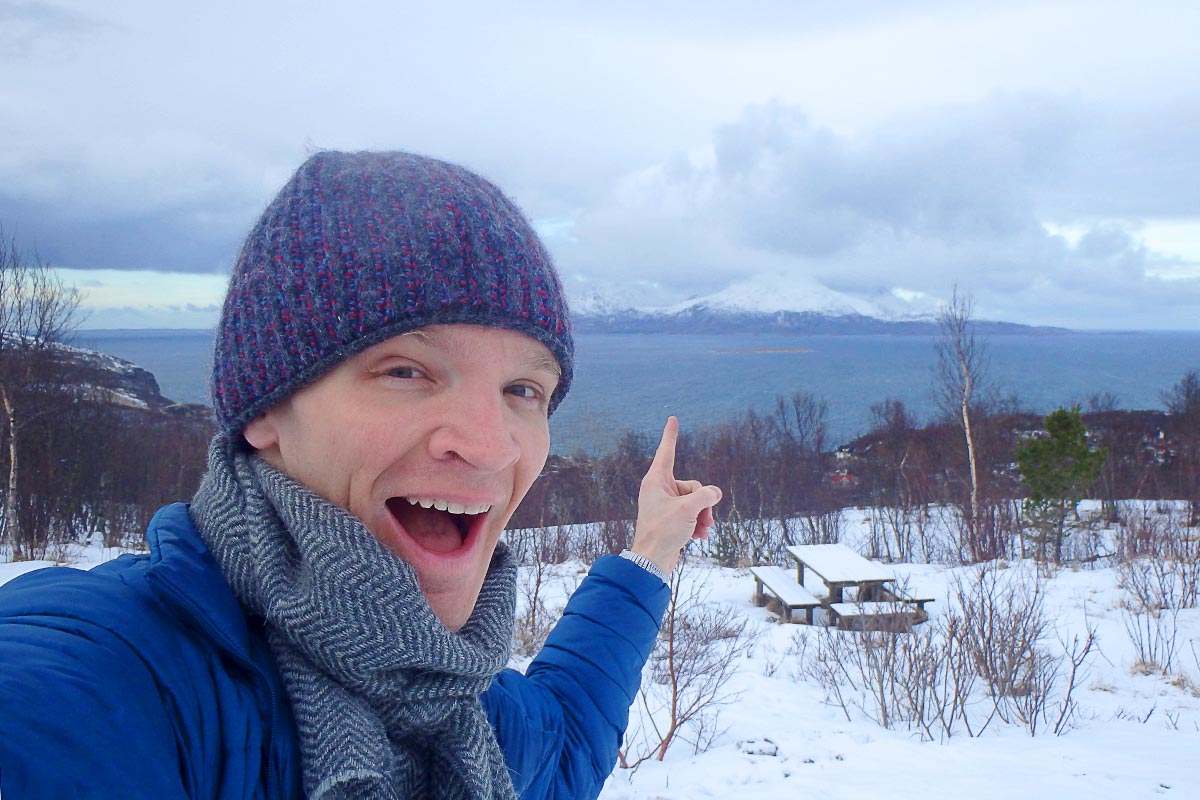
Snowy islands in a northern Norwegian fjord in February.
After Bodø we flew to the United States to end the European trip and visit family. Norway may have treated my diabetes imperfectly, but overall it wasn’t too bad. And everywhere we went was beautiful.
My blood sugars in Norway
- Total number of BG checks: 29
- Average BG: 173
- Lowest BG: 49
- Highest BG: 378
- Average morning BGs (~12:00): 162
- Average afternoon BGs (12:00~6:00): 187
- Average evening BGs (6:00~): 171
The averages were thrown of by that single reading of 378, which came after a dinner of lasagna in Trondheim but was most likely due to a nap I took in the afternoon. Besides that reading, my highest BG in Norway was 256, high but easier to accept. (And my average without that super-high number would have gone down to 166.)
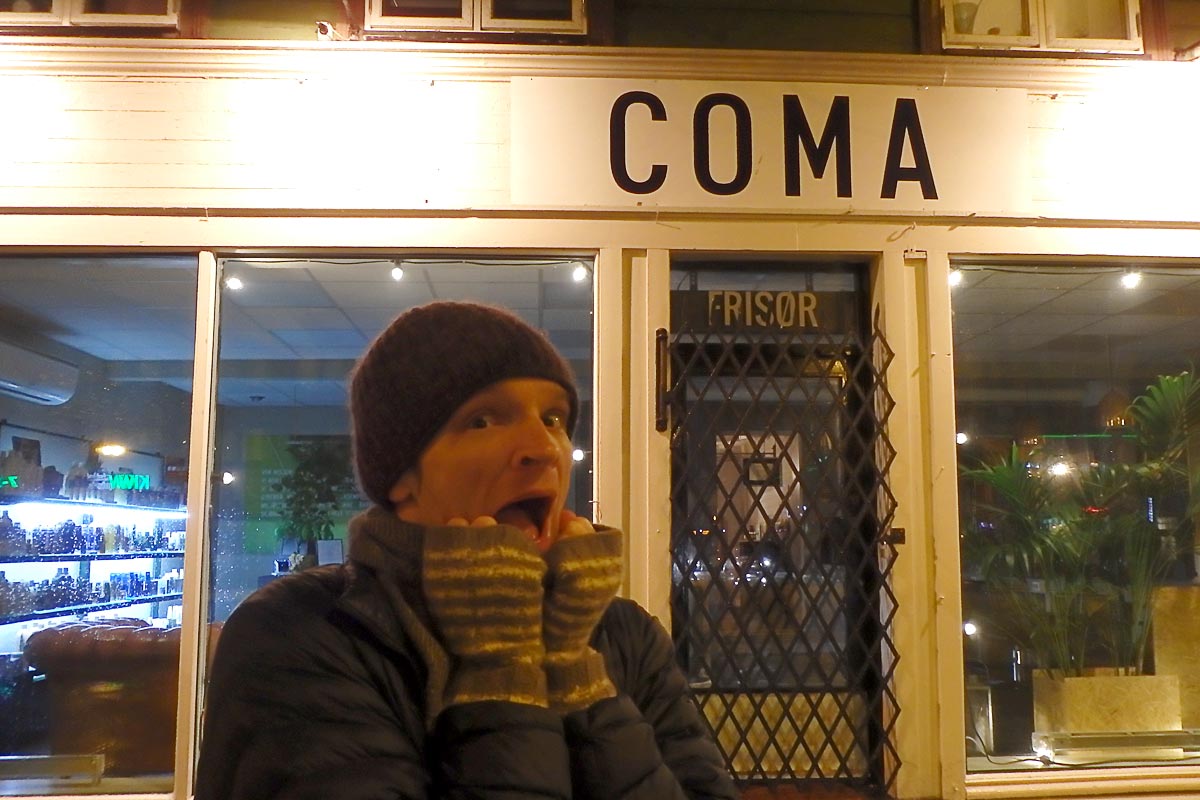
Unusually for my European trip, the afternoon average was highest; it was usually lowest. This may have been due to my consistently huge breakfasts in Norway; I wasn’t used to taking such huge shots of insulin in the morning and may have needed more time to adjust psychologically to doing so.
On your own travels to Norway, now you know what to beat – better these numbers!
Your trip to Norway
If you’ve been to Norway, whether or not with diabetes, I’d love to hear about your own time there. What did you see and where did you go? If you have diabetes or traveled with a diabetic, how were the insulin, food, and blood sugar experiences?
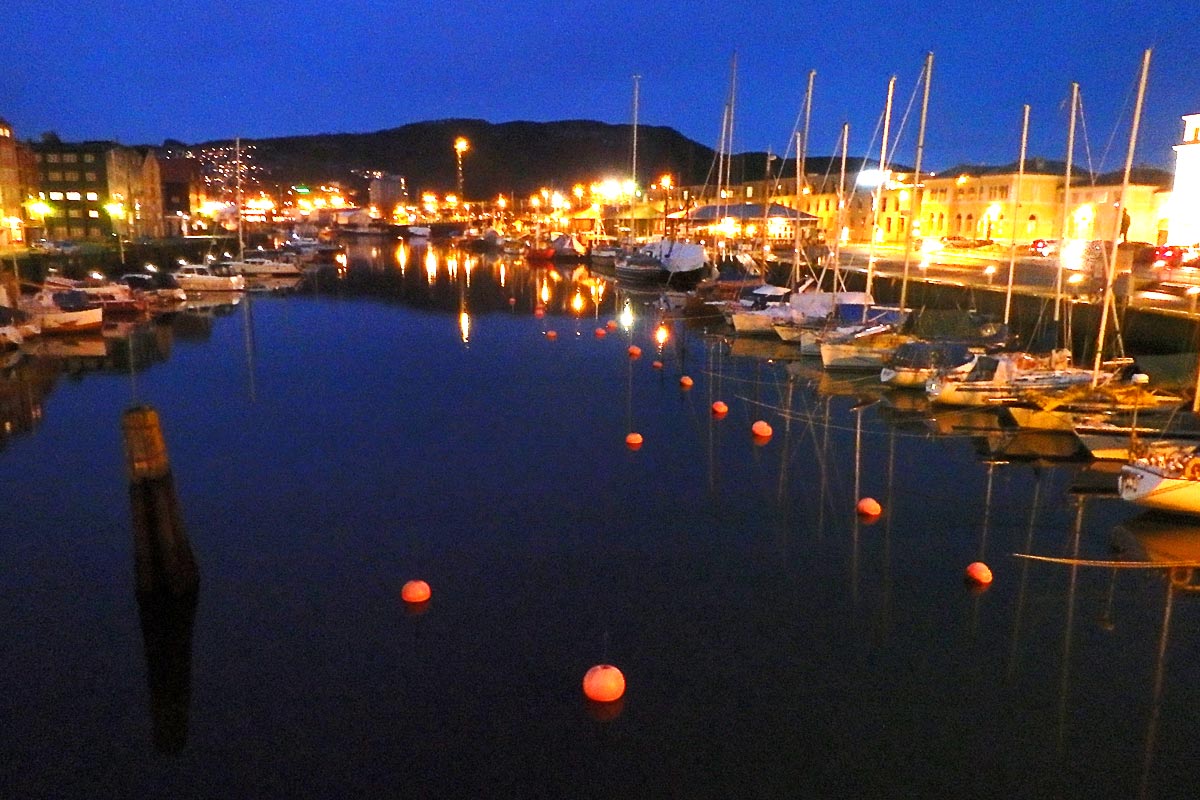
If you are thinking of going to Norway and have any questions or comments then by all means let me know. And if you’re considering traveling but are nervous about diabetes, always remember this:
You can go anywhere with diabetes!
Read more about my travels in Norway
Come along on the adventure! Follow detailed travelogues about the wondrous sights, fascinating people, and varied diabetes experiences I encountered as a traveling T1D in Norway:
Day 124: The Ol' Dubrovnik To Trondheim, Norway Flight
Day 125: Trondheim Is The Most Norway Place Possible
Day 126: The Northernmost Tram On Earth In Trondheim, Norway
Day 127: Across Norway's Arctic Circle In The Middle Of Winter
Day 128: Chilly Stroll Around The Town Of Bodø, Norway In Winter
Day 129: Cooped Up All Day In A Hotel In Bodø, Norway In February
Day 130: Mt. Rønvik And Faint Northern Lights In Bodø, Norway
Day 131: Bodø To Atlanta Flight: End Of An Epic European Journey
Thanks for reading. Suggested:
- Share:
- Read next: Tips for traveling to Malaysia with diabetes
- News: Newsletter (posted for free on Patreon every week)
- Support: Patreon (watch extended, ad-free videos and get other perks)

Support independent travel content
You can support my work via Patreon. Get early links to new videos, shout-outs in my videos, and other perks for as little as $1/month.
Your support helps me make more videos and bring you travels from interesting and lesser-known places. Join us! See details, perks, and support tiers at patreon.com/t1dwanderer. Thanks!

Really helpful information – many thanks. Hope you are still happily travelling and keeping your diabetes in check 😉
Emma – TD1 +33 years and counting, currently living in Norway!
Emma,
Thanks! Let me know if you have anything to add about T1D in lovely Norway.
Jeremy
Hi Jeremy,
DO you have any information regarding getting insulin in Norway.
I’ve recently moved to Alesund to work as a Chef.
DO I need to register with a doctor.
Any info appreciated.
Regards Neil Yates
Hi Neil,
I believe you do have to get a prescription from a doctor to buy insulin in Norway. I’m not sure what the procedure is for residents of the country. I once bought some Lantus at a pharmacy in Bodø without a prescription, but it was a special one-time thing that the pharmacist did for me under a special “emergency” provision for tourists. (Read about that here: https://www.t1dwanderer.com//travel/travelogues/europe/cant-believe-in-bodo-winter/)
But as a resident who will need insulin regularly I think you’d need a doctor you can see and get the paperwork done each time. Let me know what you find out. Thanks!
Hi,
Thanks for the insight, I am planing a trip for February 2020 to see the Northern Lights, fingers crossed with this Covid19 it will still go ahead.
Just got 2 Questions.
A. I have had an experience with minus Celsius and getting my glucometer to work. Do you have any recommendations to get a good reading.
B. My other fear is my Insulin Pens freezing over, we are on a guided tour, is this a problem.